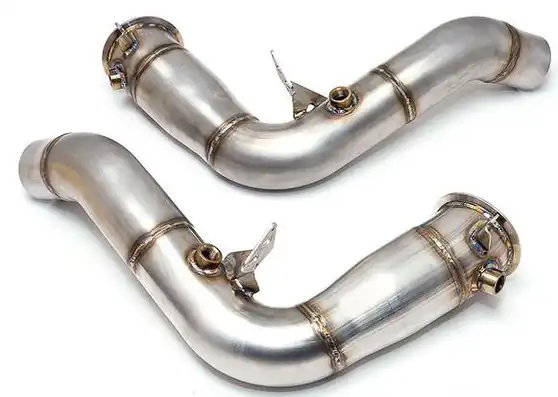What You Will Read in This Article:
- What is “Stage Tuning”?
- What will happen in “Stage 1 Remap”?
- What will happen in “Stage 2 Remap”?
- What will happen in “Stage 3 Remap”?
- What is effects of Aftermarket parts in Remap?
What is “Stage Tuning”?
Most tuning companies offer their remapping service in 3 different levels, which are called tuning stages. In each of these three stages, specific changes are made to the various car parameter tables. In stages two and three, these changes also include aftermarket parts. Here, we explain these three stages.
What Will Happen in “Stage 1 Remap”?
After “Stage 1 Tuning" or remapping, the performance of the vehicle will typically improve. The engine's power and torque output will increase, resulting in faster acceleration and improved overall drivability. Additionally, fuel efficiency may also improve slightly due to the optimized tune. However, it's important to note that every vehicle is different, and the exact changes will depend on the specific make and model being tuned. It's best to consult with a professional tuner who can provide tailored advice for your particular vehicle.
At this stage, you do not need any aftermarket and the remapping can be done on your car's ECU without any aftermarket.
Is stage 1 remap safe?
This question is of great interest to many of our customers and enthusiasts of remapping around the world. In response to this question, we must say that: "No. If this work is done by a professional and experienced tuner and the changes to the tables are within the safe range of the engine and the ECU, stage 1 or even stages 2 and 3 remapping will not harm the engine."
What Will Happen in “Stage 2 Remap”?
Stage 2 tuning or remapping typically involves modifying the air intake and exhaust system of the vehicle (or DeCat which we have explained it full and comprehensive here) in addition to tuning the engine control unit (ECU). This can result in a significant increase in power and torque compared to stage 1 tuning.
After stage 2 tuning, you may notice a substantial improvement in throttle response, acceleration, and overall performance. The engine will be able to breathe better thanks to the upgraded air intake (cold intake) and exhaust system (headers and downpipe), which allows for more air to flow into the engine and more exhaust gases to exit the engine quickly. Additionally, the ECU tune will be optimized to take advantage of these upgrades and provide even more power and torque output.

What Will Happen in “Stage 3 Remap”?
Stage 3 tuning typically involves making modifications (like turbo, injectors and etc.) to increase power of engine, you can expect to see significant changes in the performance of the vehicle. Specifically, after stage 3 tuning, you may notice an increase in horsepower and torque, allowing for faster acceleration and improved overall speed. You may also experience improved throttle response and more aggressive exhaust sound.
Also, for this stage, car must be remapping on dyno or for modification need to data logging and AFR gauge. Keep in mind that changes in internal engine components, such as changes in valve diameters, are also part of Stage 3 tuning. In fact, the need for remapping after making internal changes to the engine's operation is essential and prevents engine damage, as the original ECU map is modified based on the factory engine installed in the vehicle.
📍If you needed, CaracalTech performs stage 3 ECU remapping online and by your dynamometer.
What is Effect of Aftermarket Parts in Remap?
When it comes to tuning a vehicle, there are many different options available. One of these options is installing aftermarket parts, which can have both positive and negative effects on the performance of your car after a remap.
On the one hand, aftermarket parts can help to improve the power and torque output of your engine. For example, installing a high-performance exhaust system can increase the flow of exhaust gases, allowing your engine to breathe more easily and produce more power. Similarly, upgrading your air intake system can help to bring in more cool air, leading to better combustion and increased horsepower.
However, it's important to note that not all aftermarket parts are created equal. In some cases, installing low-quality or poorly designed parts can actually decrease the performance of your car. For example, using an improperly sized turbocharger can lead to turbo lag, decreased throttle response, and other issues.
Overall, the effects of aftermarket parts on tuning largely depend on the quality and compatibility of the parts you choose. If you're considering installing aftermarket parts, it's important to do your research and consult with a reputable tuner to ensure that you're getting high-quality products that will work well with your vehicle's existing systems.
❗For more information and probable problems feel free to contact us: support@caracaltech.com
